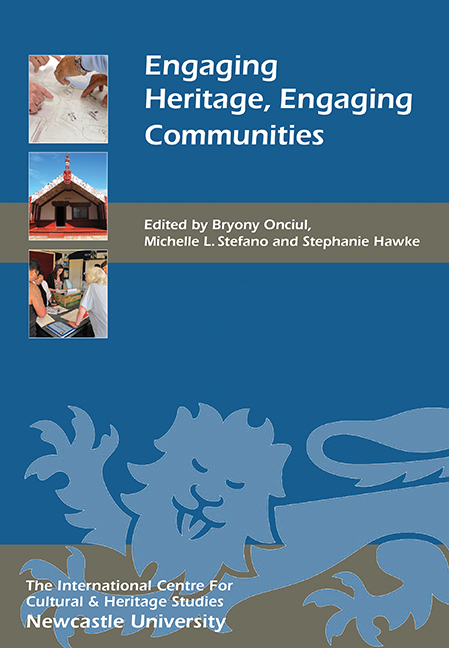Book contents
- Frontmatter
- Contents
- List of Illustrations
- Acknowledgments
- Introduction
- Engaging Concepts
- Engaging Creatively
- Engaging Challenges
- 12 Embattled Legacies: Challenges in Community Engagement at Historic Battlefields in the UK
- 13 At the Community Level: Intangible Cultural Heritage as Naturally-occurring Ecomuseums
- 14 Subaltern Sport Heritage
- 15 Museums and the Symbolic Capital of Social Media Space
- 16 Relational Systems and Ancient Futures: Co-creating a Digital Contact Network in Theory and Practice
- 17 Interview – Conal McCarthy
- List of Contributors
- Index
- Miscellaneous Endmatter
15 - Museums and the Symbolic Capital of Social Media Space
from Engaging Challenges
Published online by Cambridge University Press: 13 April 2017
- Frontmatter
- Contents
- List of Illustrations
- Acknowledgments
- Introduction
- Engaging Concepts
- Engaging Creatively
- Engaging Challenges
- 12 Embattled Legacies: Challenges in Community Engagement at Historic Battlefields in the UK
- 13 At the Community Level: Intangible Cultural Heritage as Naturally-occurring Ecomuseums
- 14 Subaltern Sport Heritage
- 15 Museums and the Symbolic Capital of Social Media Space
- 16 Relational Systems and Ancient Futures: Co-creating a Digital Contact Network in Theory and Practice
- 17 Interview – Conal McCarthy
- List of Contributors
- Index
- Miscellaneous Endmatter
Summary
It was Pierre Bourdieu who first showed us that it is unnatural to visit the museum when its symbols seem distant from our personal sense of place. He brought to light issues of exclusion that require museums to close the gap between themselves and a public distanced and disengaged by their position in social space (Bourdieu 1977; 1984; 1989). The influence of Bourdieu's sociology, albeit updated and adapted, is traceable in the various approaches many museums adopt to overcome cultural barriers in their public perception and community engagement (Merriman 1991; Fyfe 2006; Prior 2005; Barrett 2011). However, an emerging body of literature draws attention to the fact that most segments of the online public are excluded or disengaged from museums on the web (Kidd 2011; Pratty 2006; Russo and Peacock 2009). Common to this writing is the distinction between museums on the web and the online public.
This chapter lays out the case that, as the structure of social space changes online, the digital public is blind to the online resources and social media activities of museums for the simple reason that the museum has not adapted its practices to the new structure. Consequently, neither museum digital collections nor invitations for the public to join them on social media are socially inclusive; a distinction can thus be made between being on the web and being of the web. However, while Bourdieu's model of social space has been hugely influential in helping museums understand issues of social exclusion and public engagement (Bourdieu 1984; Merriman 1991; Prior 2005; Barrett 2011), its application rarely makes a distinction between the way social space is structured offline and online.
This is odd, as Bourdieu's model of social space is far more appropriate as an explanation of the cultural distances between distinct social clusters online than it is for its more common application to real place-based communities. His model is seen to correspond with online phenomena, such as people with no prior relationship to one another clustering via their individual acts on social media. Internet theorists Clay Shirky and Felix Stalder support this comparison with Bourdieu through their exploration of the way social space changes its structure when it transfers online (Shirky 2008; Stalder 2006).
- Type
- Chapter
- Information
- Engaging Heritage, Engaging Communities , pp. 189 - 204Publisher: Boydell & BrewerPrint publication year: 2017



